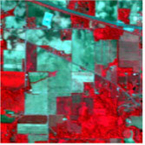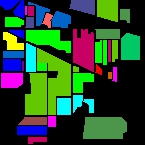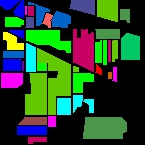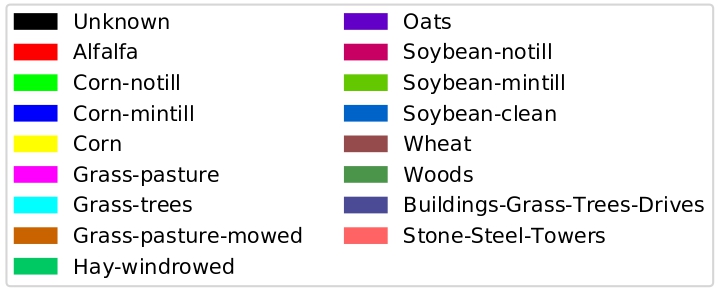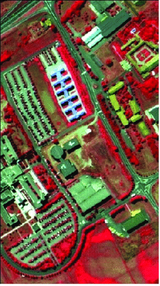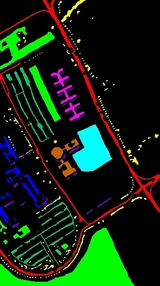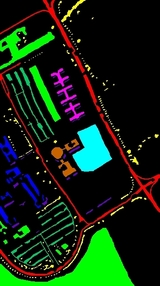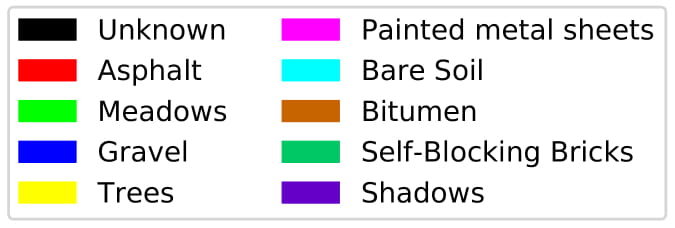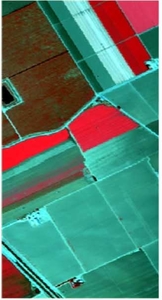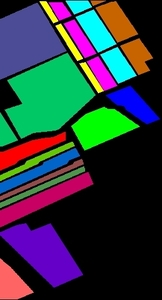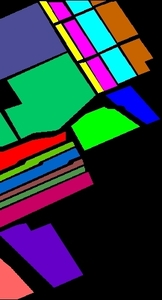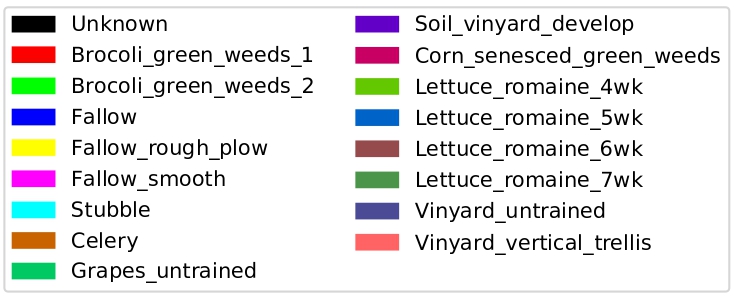The HybridSN is spectral-spatial 3D-CNN followed by spatial 2D-CNN. The 3D-CNN facilitates the joint spatial-spectral feature representation from a stack of spectral bands. The 2D-CNN on top of the 3D-CNN further learns more abstract level spatial representation.
Fig: Proposed HybridSpectralNet (HybridSN) Model with 3D and 2D convolutions for hyperspectral image (HSI) classification.
Fig.2 The IN dataset classification result (Overall Accuracy 99.81%) of Hybrid-SN using 30% samples for training. (a) False color image. (b) Ground truth labels. (c) Classification map. (d) Class legend.
Fig.3 The UP dataset classification result (Overall Accuracy 99.99%) of Hybrid-SN using 30% samples for training. (a) False color image. (b) Ground truth labels. (c) Classification map. (d) Class legend.
Fig.4 The UP dataset classification result (Overall Accuracy 100%) of Hybrid-SN using 30% samples for training. (a) False color image. (b) Ground truth labels. (c) Classification map.
Detailed results can be found in the Supplementary Material
If you use this code in your research, we would appreciate a citation to the original paper:
@article{roy2019hybridsn,
title={HybridSN: Exploring 3D-2D CNN Feature Hierarchy for Hyperspectral Image Classification},
author={Roy, Swalpa Kumar and Krishna, Gopal and Dubey, Shiv Ram and Chaudhuri, Bidyut B},
journal={IEEE Geoscience and Remote Sensing Letters},
year={2019}
}
Part of this code is from a implementation of Classification of HSI using CNN by Konstantinos Fokeas.
Copyright (c) 2019 Gopal Krishna. Released under the MIT License. See LICENSE for details.



